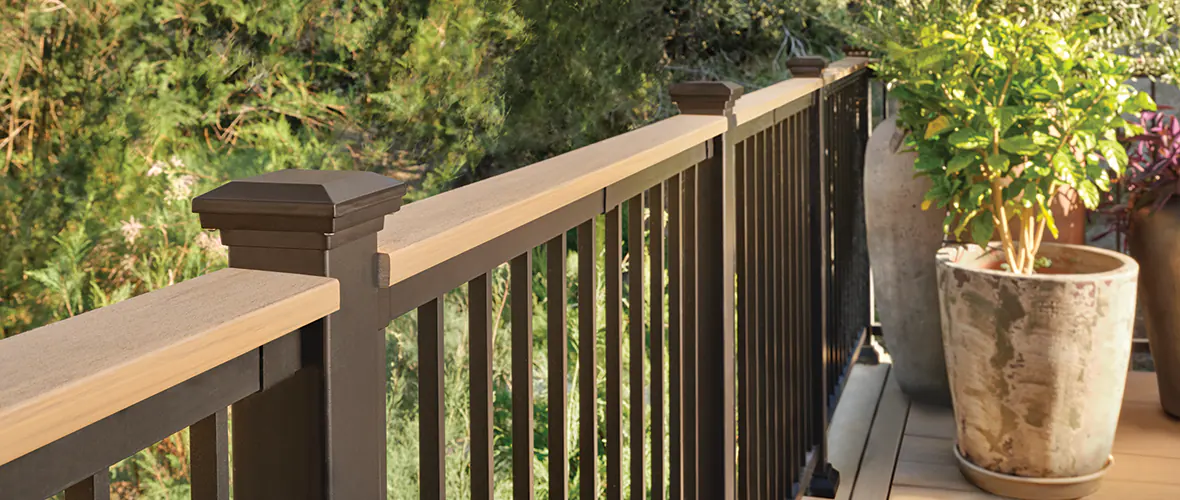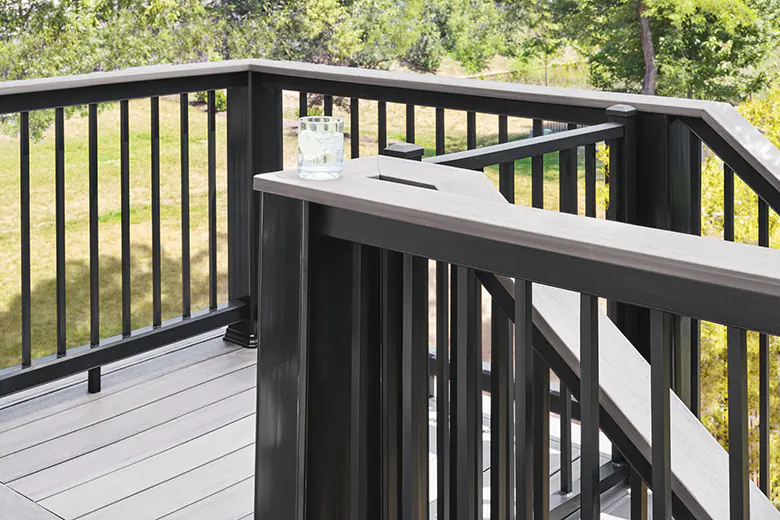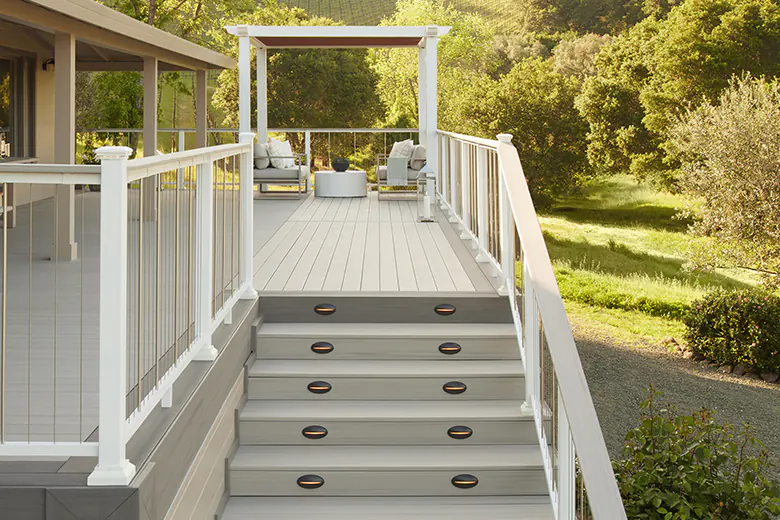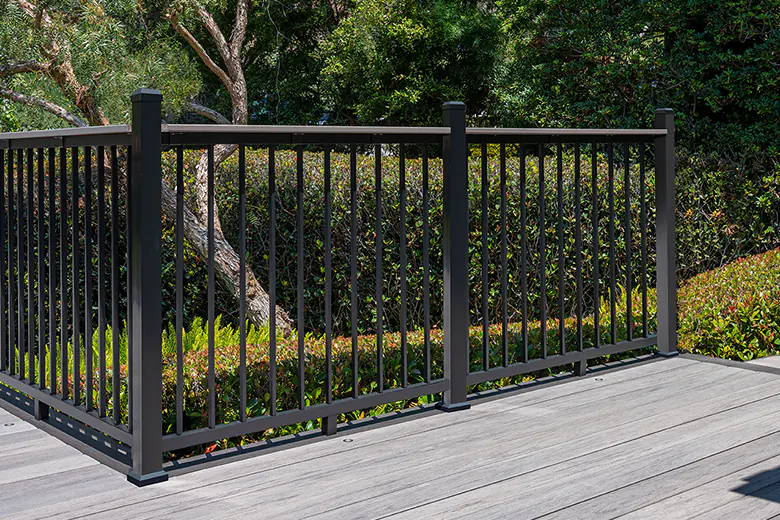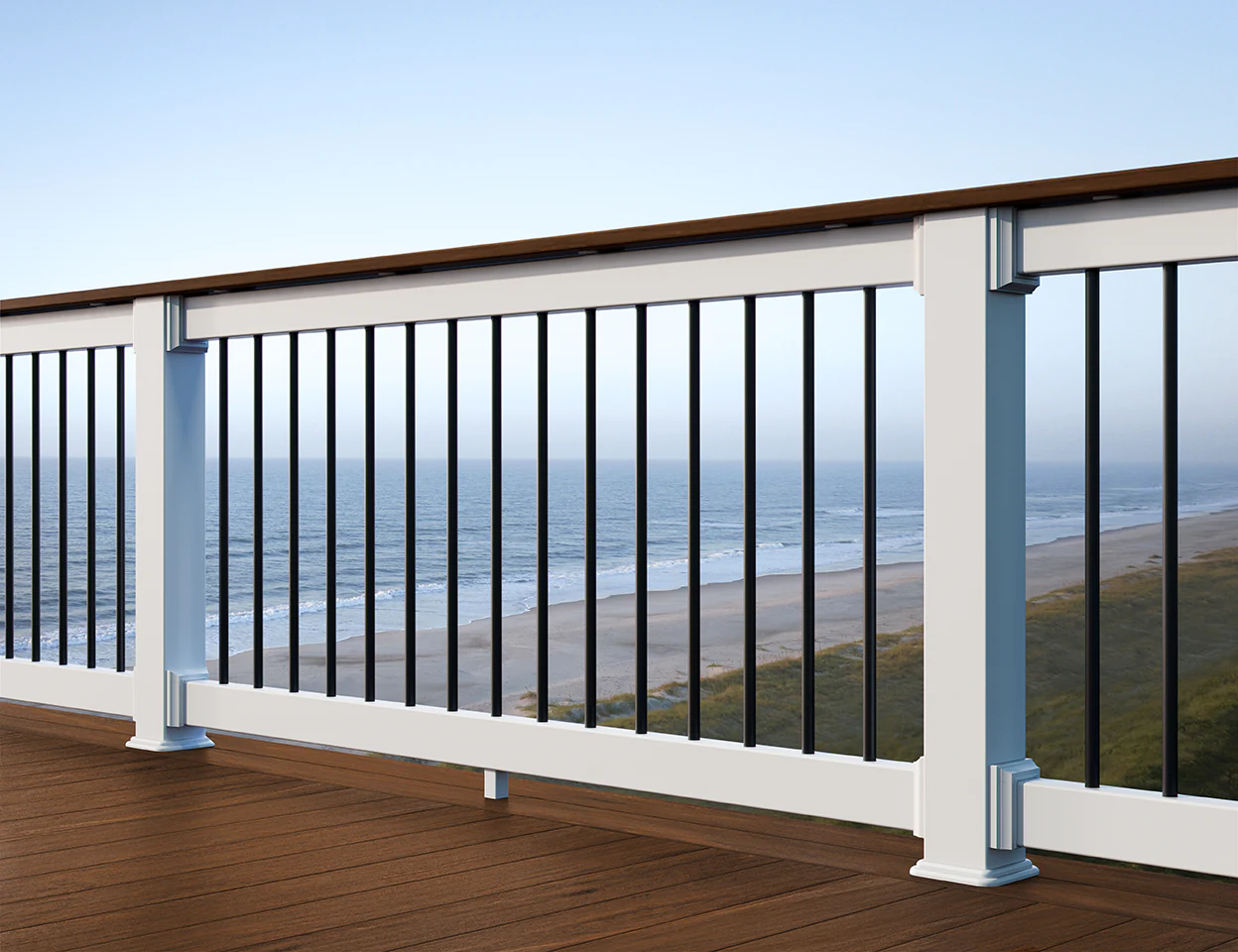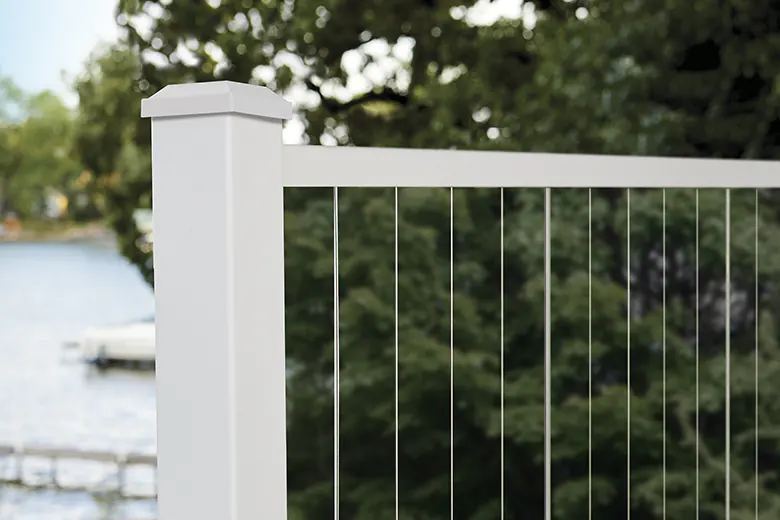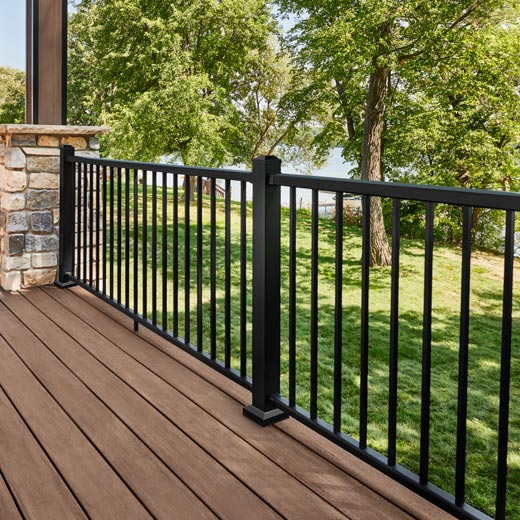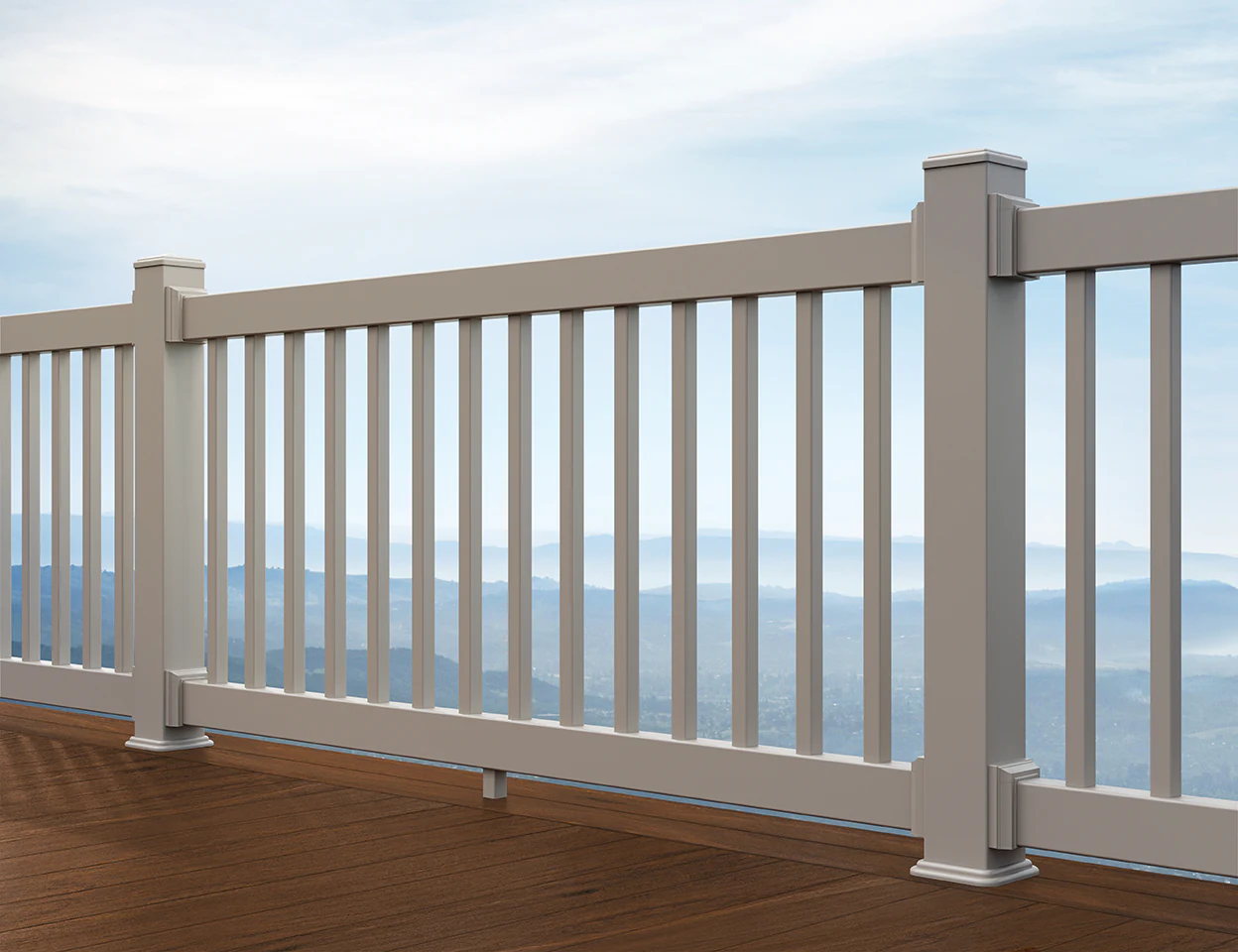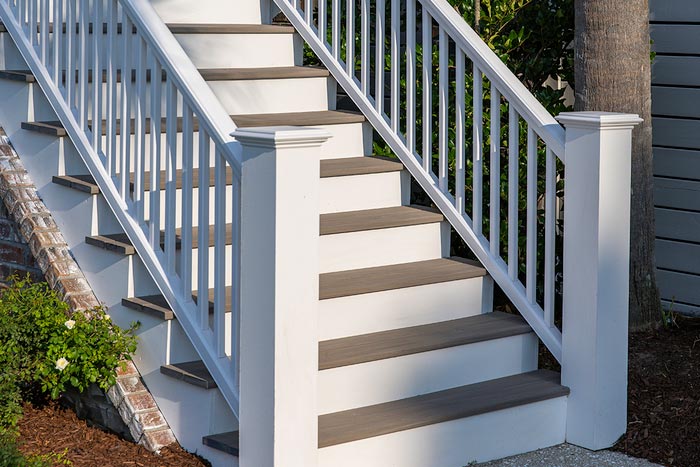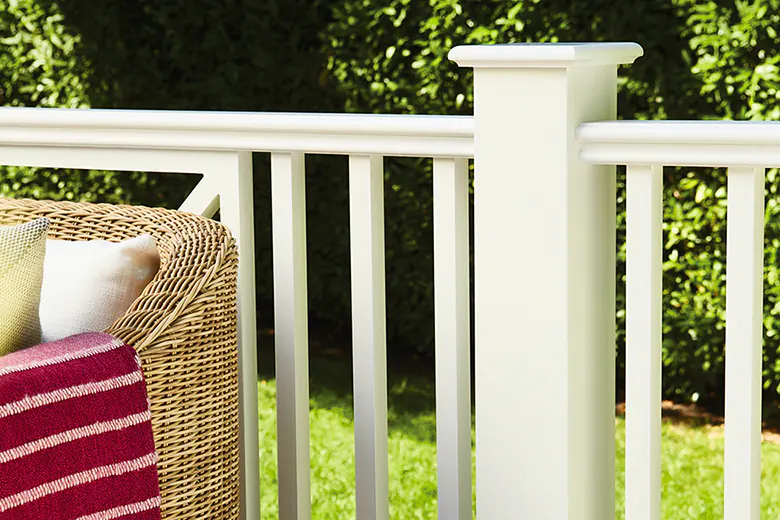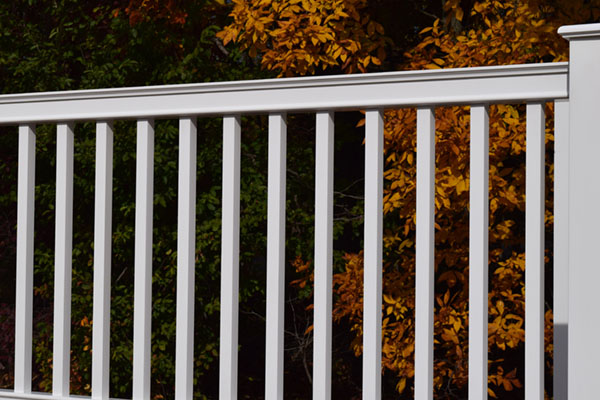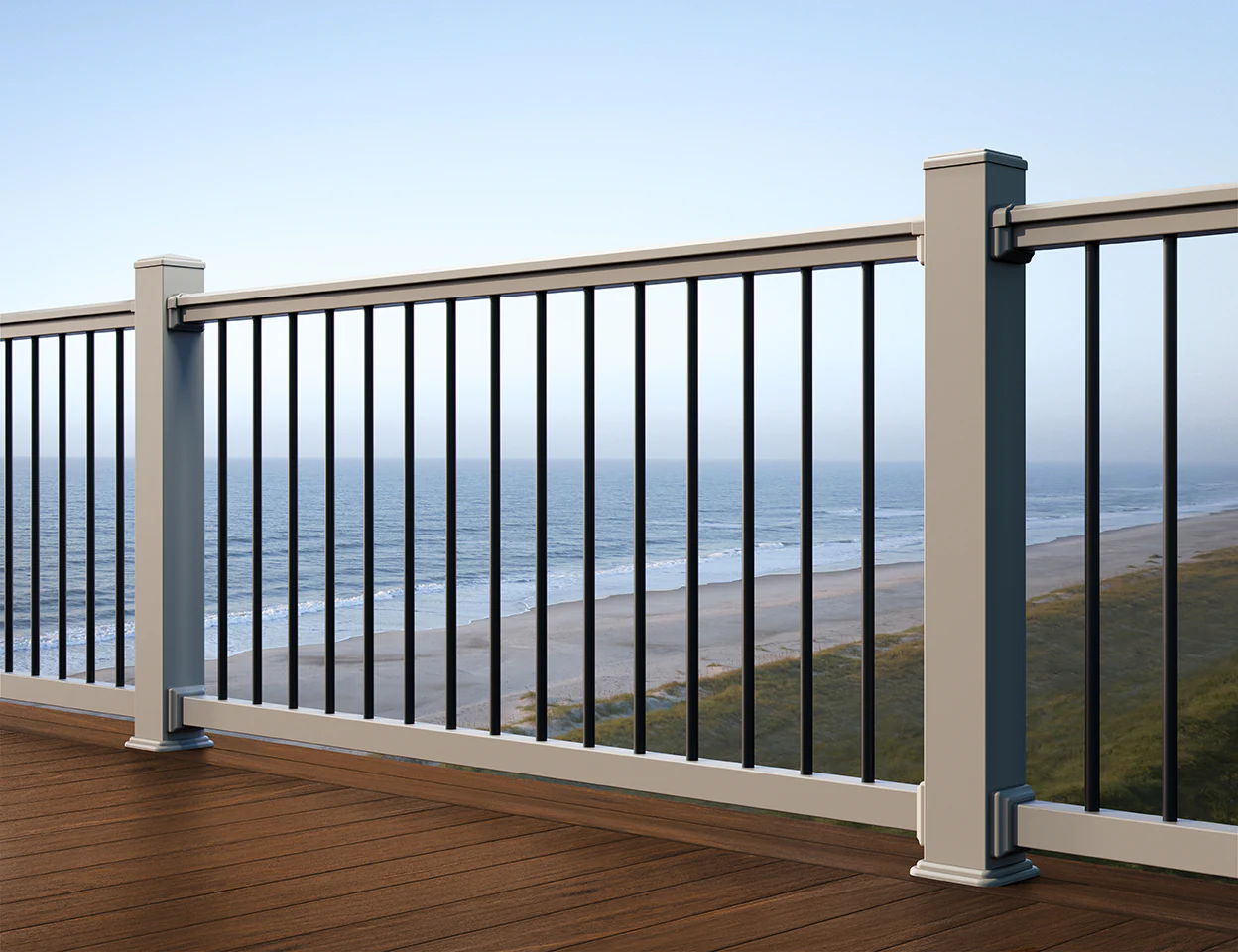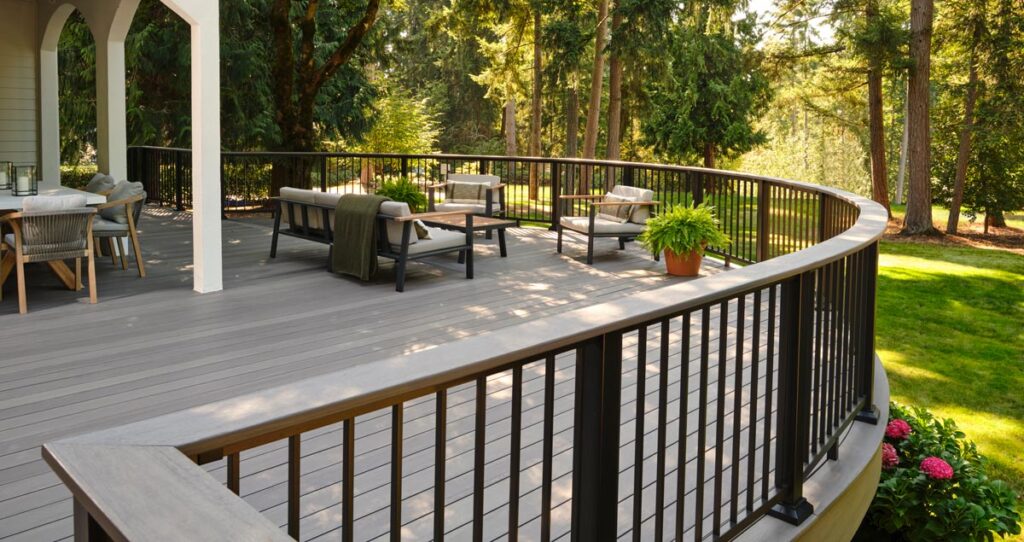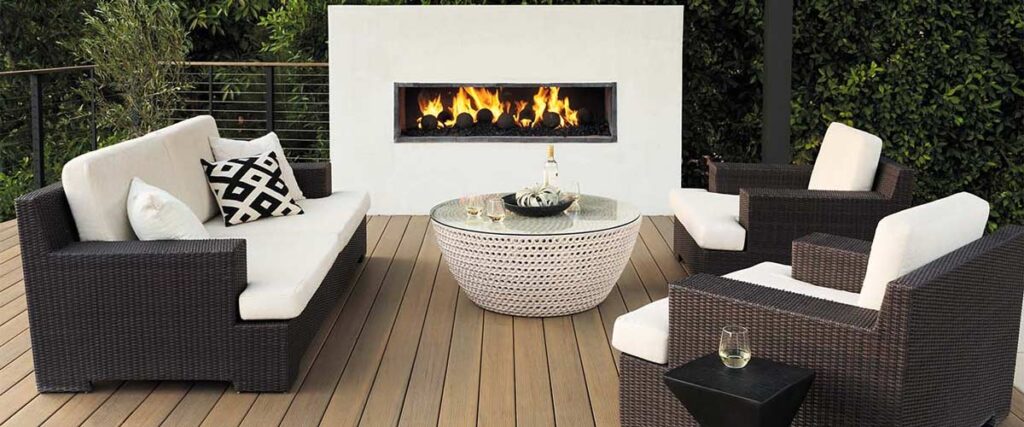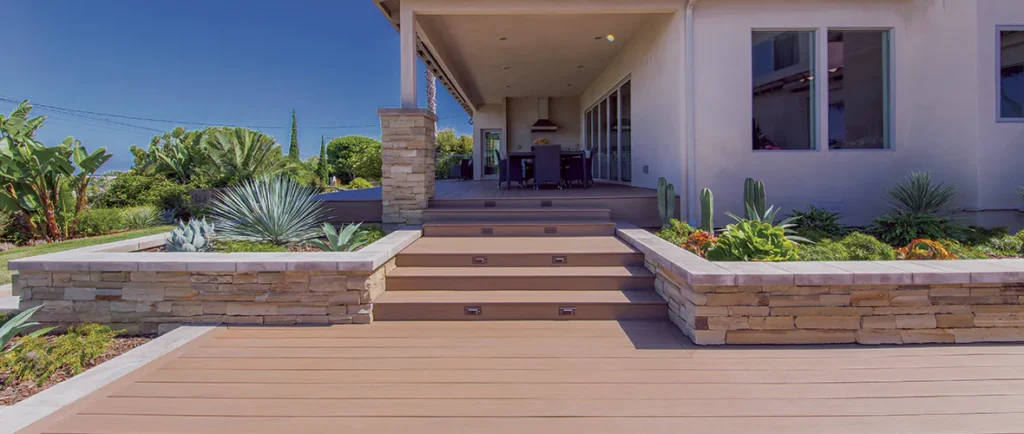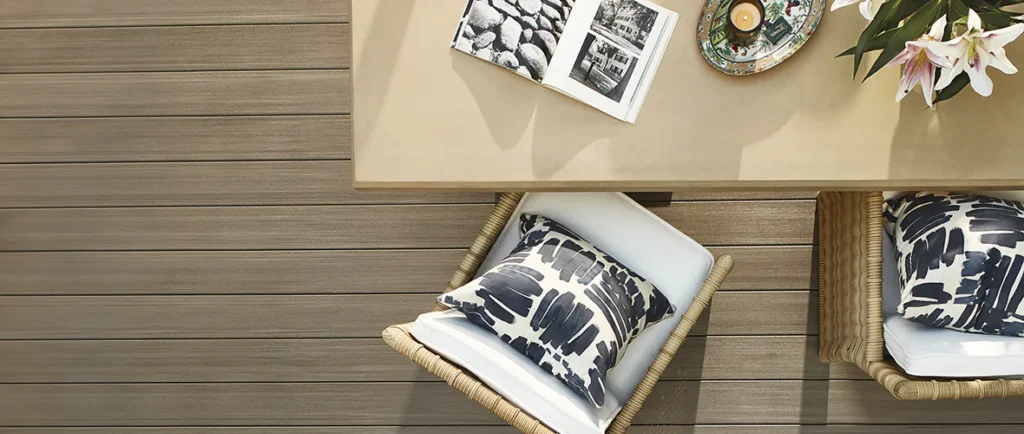Your deck top rail is a fundamental part of your railing design and can influence the entire look and feel of your outdoor living space. That’s why finding the right top rail style is an essential part of planning your deck design. But with so many options, how do you know which is right for your space? To help you in your journey, we’ve gathered deck top rail ideas to suit your unique style, plus guidance on how to incorporate each look into your design.
What Are All the Components of Railing Called?
Before you jump into deck top rail ideas, get familiar with all the components of a railing, including the top rail, so you can customize your design like a pro.
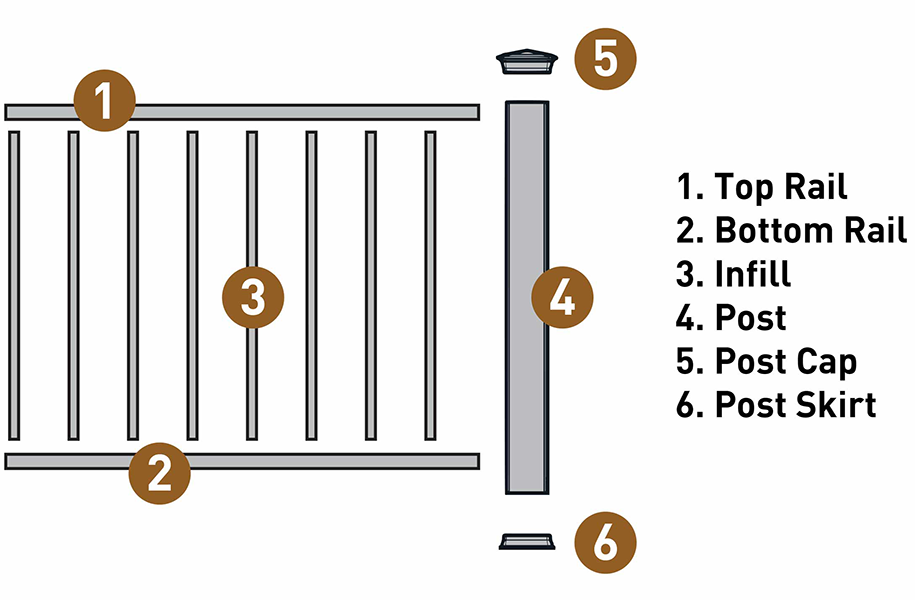
- Top rail: The uppermost piece of the railing that runs between posts and connects to the top of the infill. The top rail is also sometimes referred to as a cap rail. A top rail is different from a handrail, which is typically installed lower than the top rail and is meant to be an additional graspable component of railing.
- Bottom rail: The lower piece of the railing that runs parallel to the top rail between posts and connects to the bottom of the infill.
- Infill: The piece that fits between the top and bottom rail, filling the inner portion of the rail. Infill styles range from balusters (like poles) and glass to cable and decorative panels.
- Post: The vertical piece that connects each railing panel and secures the railing to the deck surface.
- Post cap: The top piece of the post that often features a design and can include lighting.
- Post skirt: A detail piece that covers the bottom of the post, where it connects to the deck surface.
Deck Top Rail Ideas: Know Your Material Options
Deck top rail ideas and styles can vary depending on the material you choose. While traditional wood has historically been a popular choice, it’s not the best. More contemporary materials like PVC, composite, metal, and vinyl railing can give you that look you want — with the durability and performance you deserve.
Traditional Wood
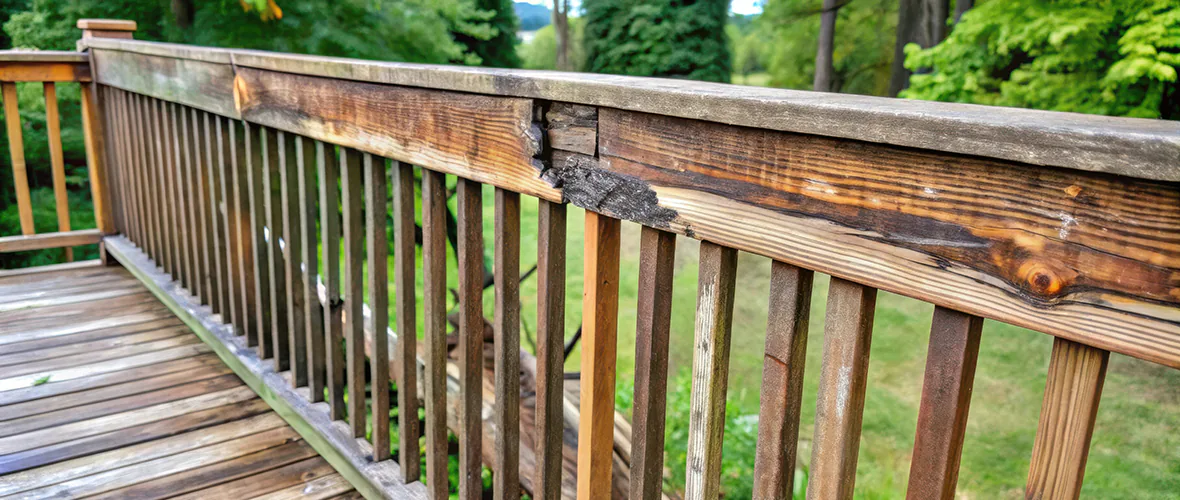
Fading, splintering, and moisture damage like mold and rot are some of the main issues traditional wood railings face. While wood stains and sealers can restore color and offer some protection, they require painstaking and costly maintenance to apply. Learn more about staining deck rails.
PVC Railing
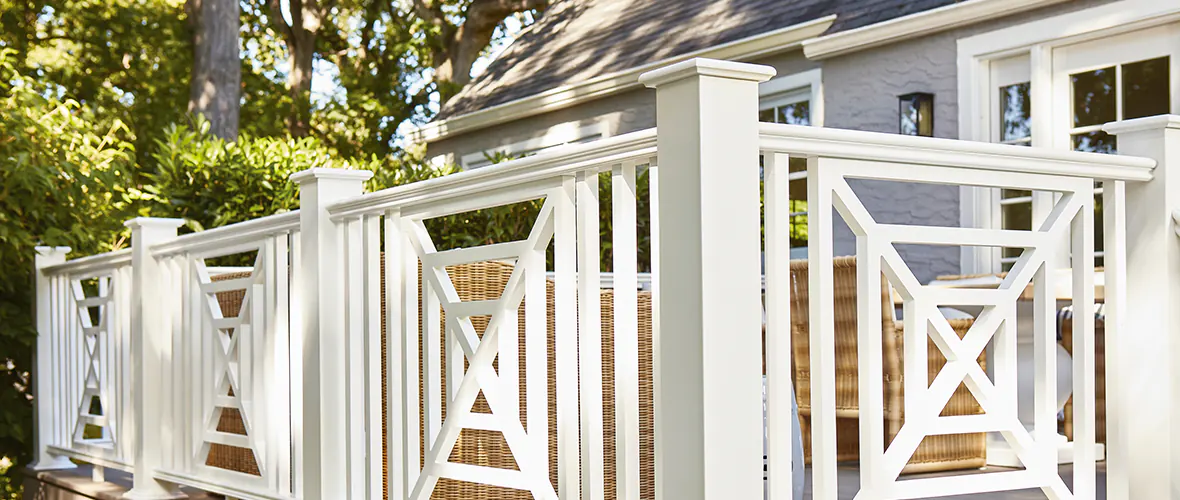
Made of extruded PVC, this railing often features a milled-wood-inspired style with elevated design potential. TimberTech PVC Railing is also reinforced with aluminum for exceptional performance. Learn more about PVC railing.
Composite Railing
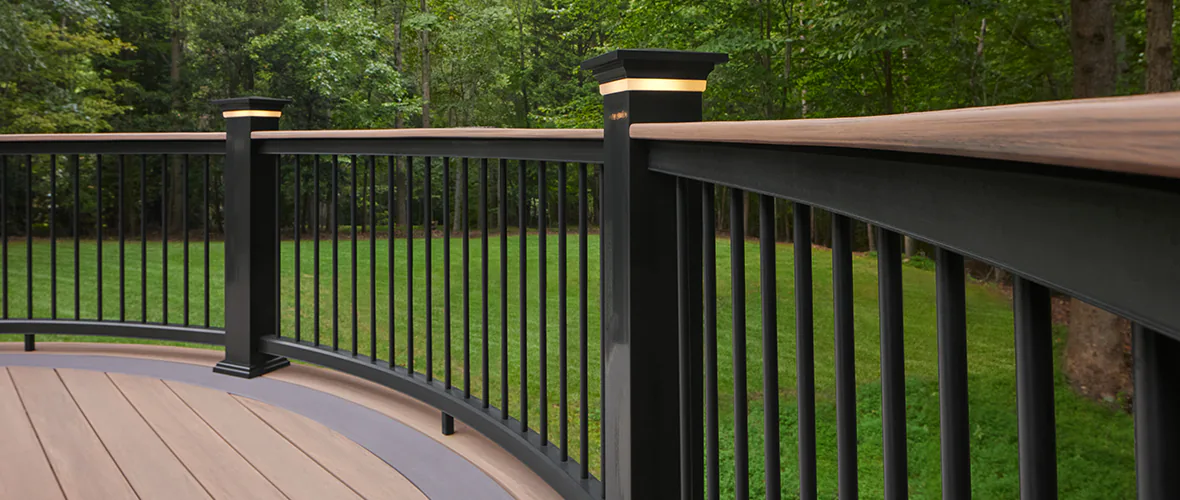
Made of a mix of high-performance polymers and recycled wood and plastic fibers, composite railing is designed to look like real wood while being far more durable. Choose top rail designs ranging from traditional milled wood looks to more contemporary, minimalist designs. Learn more about composite railing.
Metal Railing
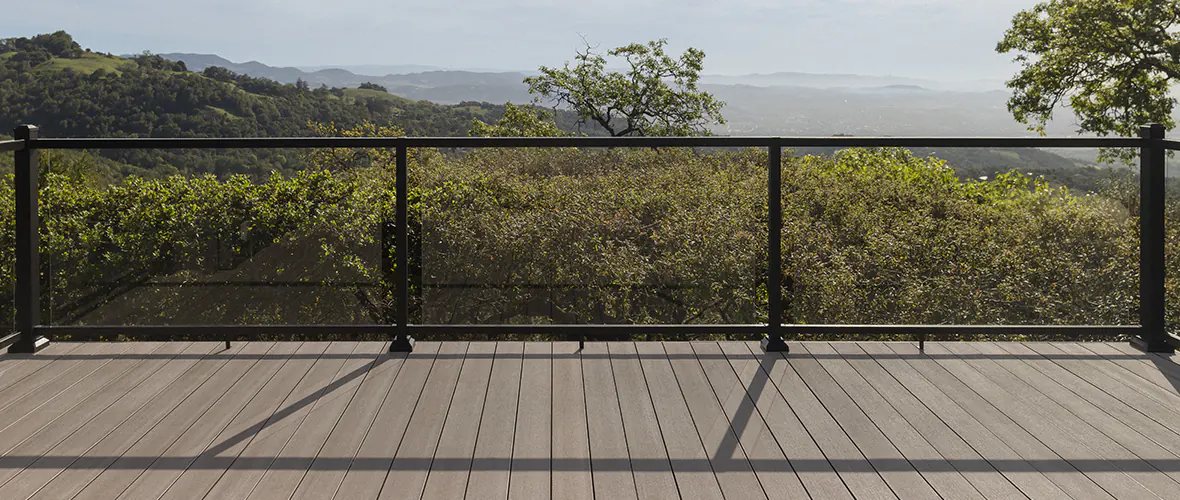
Metal railing is designed to mimic the look of wrought metals, like iron, with far greater resistance to rust, corrosion, and fading. Metal railing is often made from non-combustible materials (like aluminum or steel), making it a smart choice for homes in fire prone areas. Choose from classically inspired top rails to sleek modern designs. Learn more about metal railing.
Vinyl Railing
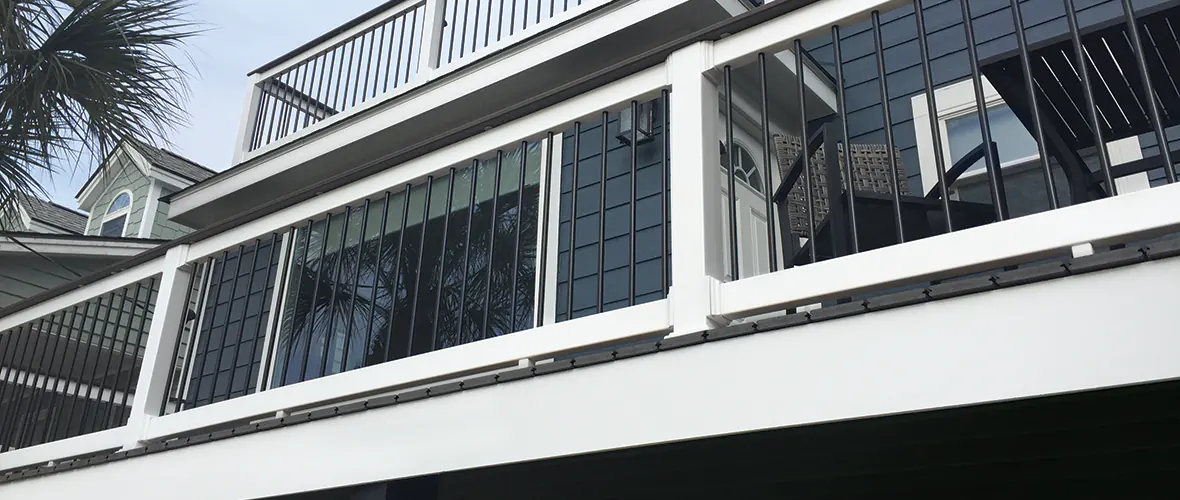
Though overall vinyl quality can vary, a premium vinyl like TimberTech Reliance Rail can offer versatile, low-maintenance design options that are also cost effective. Learn more about Vinyl railing.
With TimberTech Railing, you can skip the rigorous maintenance while enjoying high-performance, high-style railing designs. Plus, our railing systems offer several top rail, color, infill, and material options that you can mix and match to find the right look for your space.
Now that you’re familiar with your material choices, explore deck top rail ideas from contemporary, popular options to more timeless, traditional designs.
Popular Top Rail Profiles
These popular top rail profiles give you not only a stylish design, but functional benefits too! There’s an option for every look and aesthetic.
Drink Rail
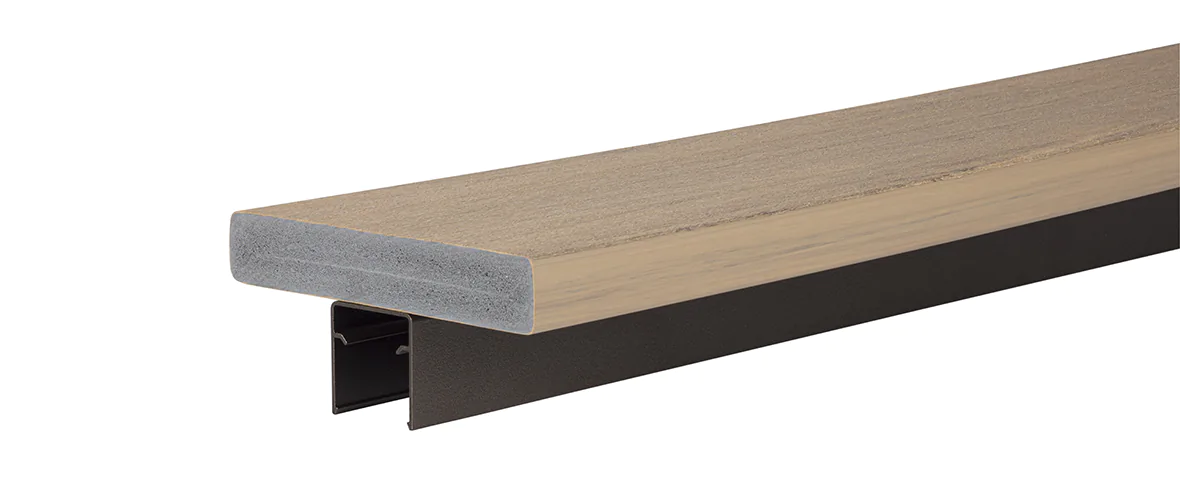
If you plan to entertain or host family gatherings on your deck, a Drink Rail is a smart and beautiful addition. By layering a deck board over a simple top rail for a linear, horizontal profile, you get a chic look ideal for transitional and modern design styles. The deck board can be installed in an over-the-post application for a continuous, flat rail or in between posts for more definition in your design.
A Drink Rail is an option with TimberTech Classic Composite Series, Impression Rail Express® aluminum railing, Fulton Rail® steel railing, and Reliance Rail Premium vinyl railing, so you can choose the option that suits you best. Plus, for your deck board top rail, you can choose a deck board color from any TimberTech Decking collection featuring square-shoulder, full-profile boards.
Drink Rail can be installed between railing posts (sometimes called into-the-post design) or over the top of posts (sometimes called over-the-post design). Depending on the type of look you’re after (into-the-post or over-the-post), the railing system, and the size of post you’re using, there may be specific size requirements for the deck board that is used as the top rail.
Modern Top Rail Profiles
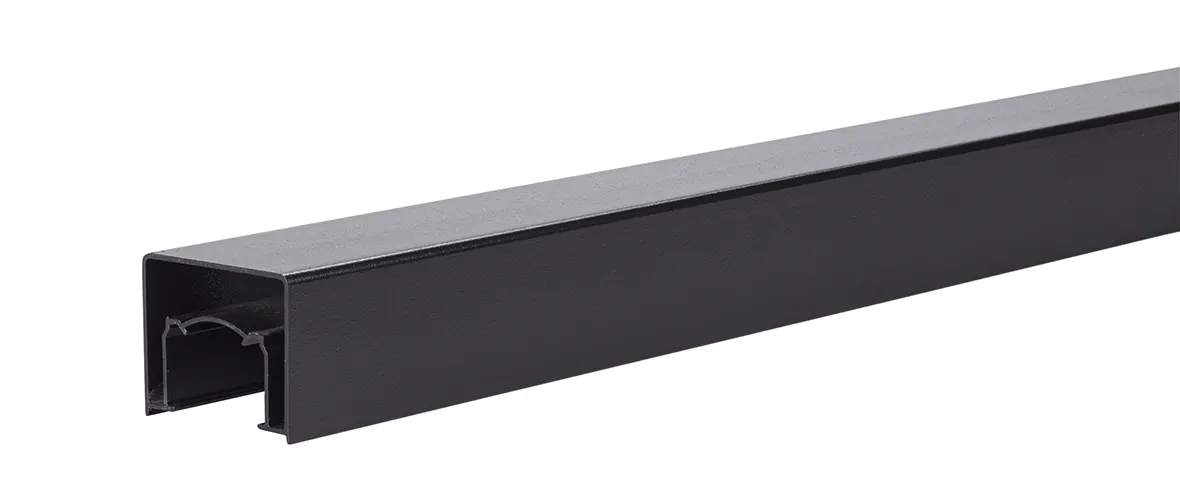
Want a sleeker and more modern look? Opt for a top rail with clean lines and a slimmer profile from one of our metal collections, Impression Rail Express (aluminum) or Fulton Rail (steel).
Traditional Top Rail Profiles
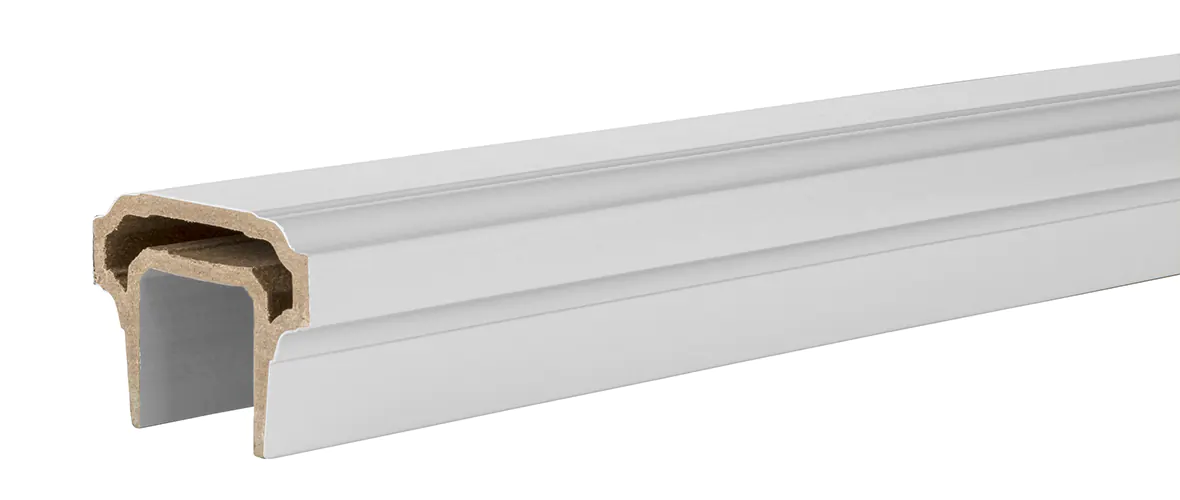
Prefer deck top rail ideas featuring more classic designs? These top rails range from traditional milled wood looks to stately wrought iron-inspired designs.
Thinking About DIY-ing Your Railing?
A successful DIY deck railing project is possible with the right tools and resources. However, keep in mind that some deck top rail ideas are easier to install on your own than others.
Be sure to check with your local building codes department and refer to your railing’s installation guide before breaking ground on your build.
Railing Installation Best Practices
No matter what style of railing you choose, there are common railing installation best practices you’ll need to abide by to ensure a safe, sturdy structure. If you’re thinking of installing your railing on only a section of your deck, keep in mind for your design that any part of your deck surface that is around 30″ or more above the ground may require a railing.
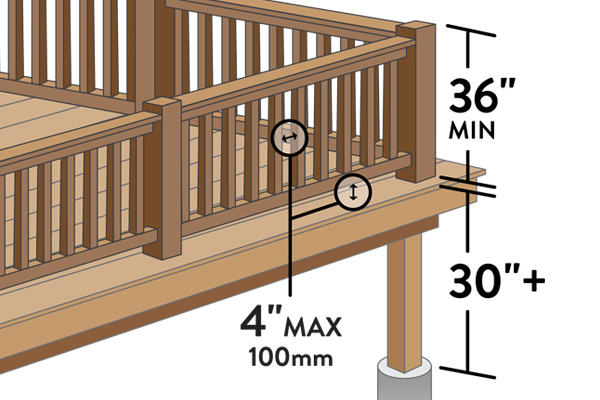
Common Railing Best Practices
Deck height: 30″ or more above the ground may require a railing
Top rail height: At least 36″ minimum from the deck floor
Space between balusters: must be less than 4″
Space between bottom rail and deck floor: must be less than 4″
Want the Easiest Deck Railing Installation? Choose Impression Rail Express for a panelized railing system that installs the balusters as one piece, rather than individually. While not panelized, Reliance Rail also installs easily and quickly. Learn more about easy deck railing.
Deck Top Rail Ideas: Bring Your Vision to Life
With deck top rail ideas percolating in your mind, you’re ready to start bringing your vision to life. Check out our Railing Overview for a complete guide to all your railing options.
